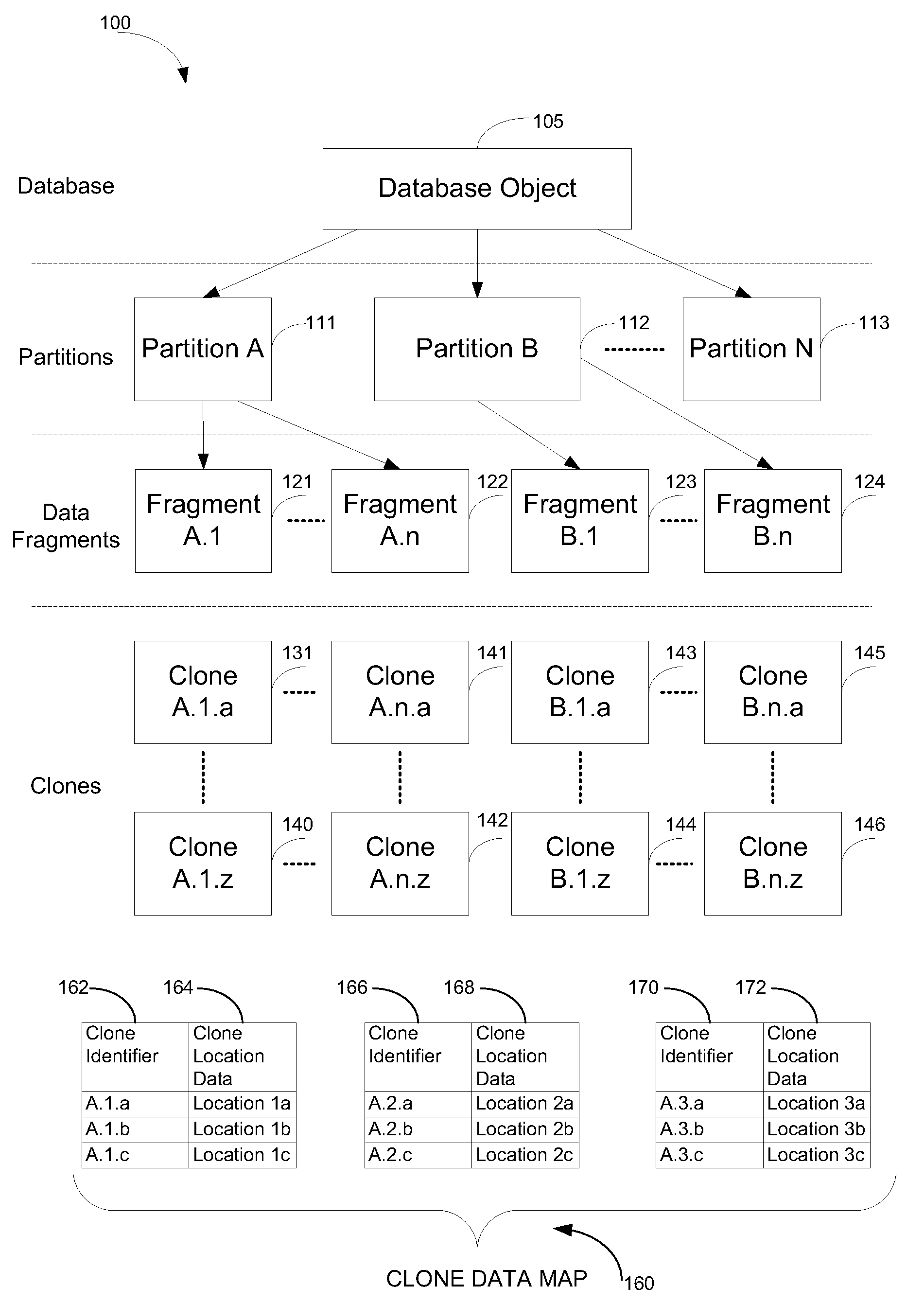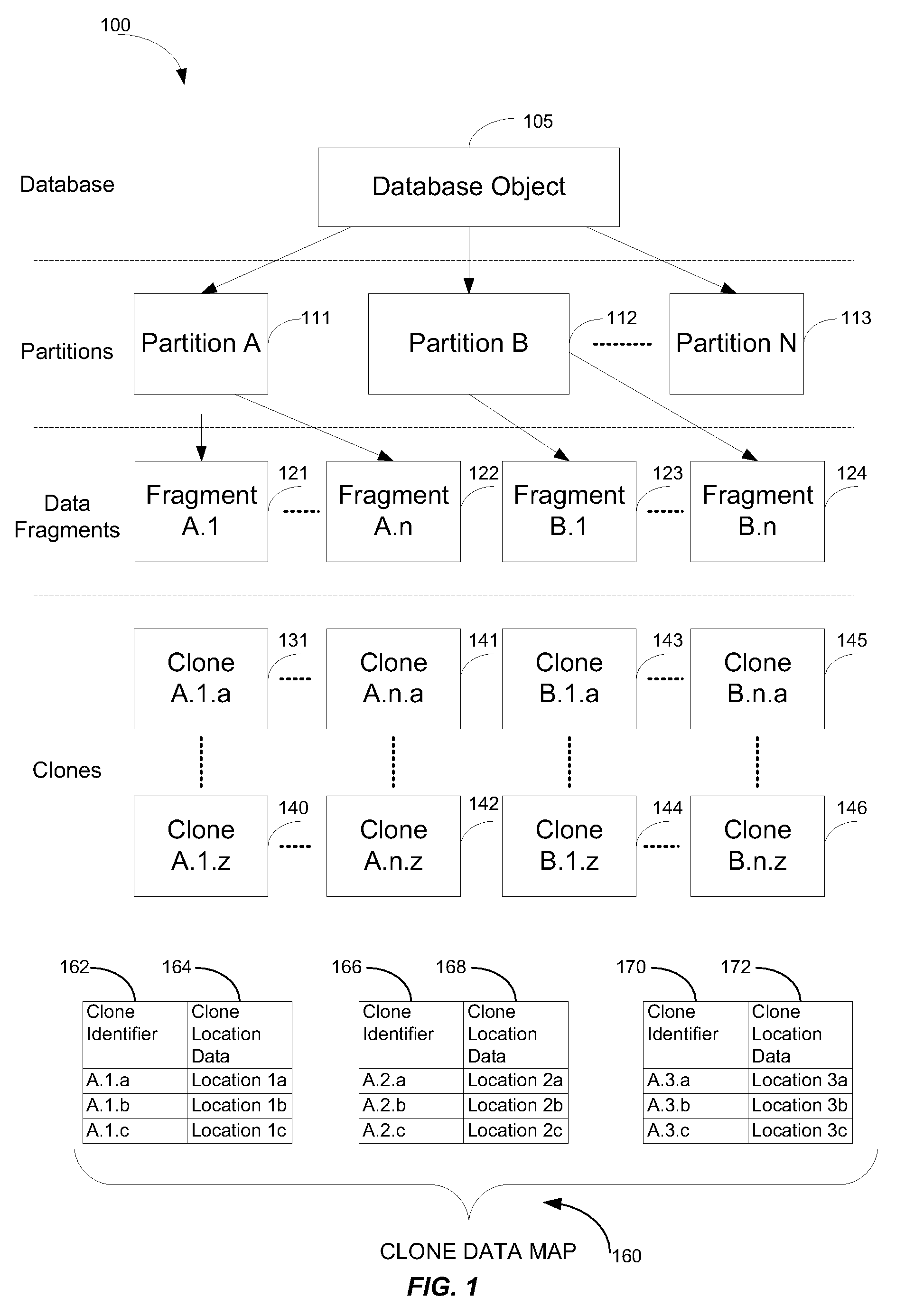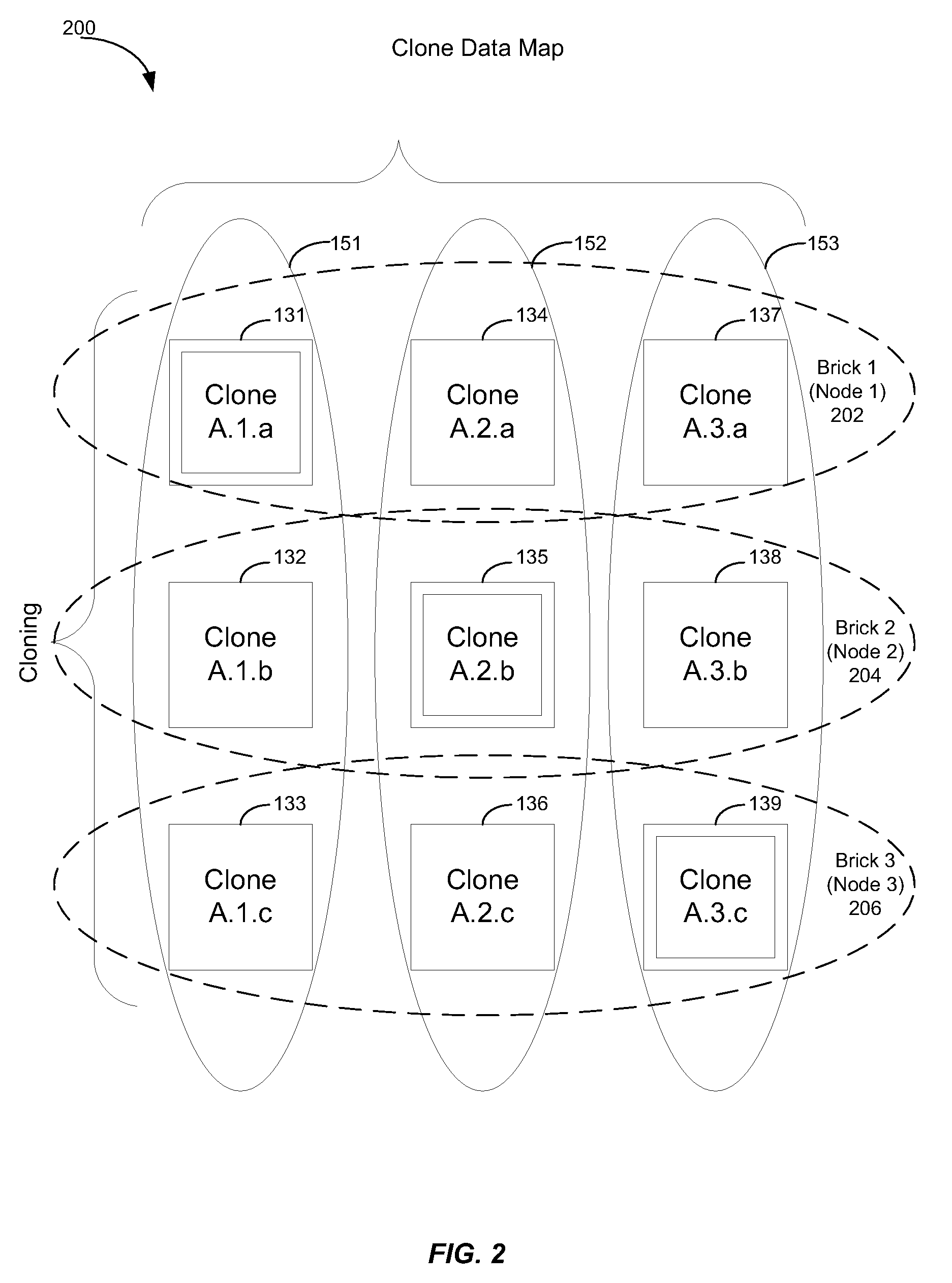Data placement transparency for high availability and load balancing
a data placement and load balancing technology, applied in the field of data placement transparency for high availability and load balancing, can solve problems such as system management, system downtime, increased complexity, etc., and achieve the effects of high availability, scalability and load balancing, and avoiding bottlenecks
- Summary
- Abstract
- Description
- Claims
- Application Information
AI Technical Summary
Benefits of technology
Problems solved by technology
Method used
Image
Examples
Embodiment Construction
[0015]In a particular embodiment, a method of updating a clone data map associated with a plurality of nodes of a computer system is disclosed. The clone data map includes node identification data and clone location data. The method includes detecting a node failure event of a failed node of the computer system. The failed node may support a primary clone. In response to the detected node failure event, the method includes updating the clone data map. The clone data map is updated such that a secondary clone stored at a node other than the failed node is marked as a new primary clone.
[0016]In another particular embodiment, a method of adding a node to a node cluster is disclosed. The method includes identifying a set of clones to be migrated to a new node of a computing system. Each clone in the set of clones includes a replicated data fragment stored at a different storage location at the computing system. The method includes creating an entry in a clone data map for the new node t...
PUM
 Login to View More
Login to View More Abstract
Description
Claims
Application Information
 Login to View More
Login to View More - R&D
- Intellectual Property
- Life Sciences
- Materials
- Tech Scout
- Unparalleled Data Quality
- Higher Quality Content
- 60% Fewer Hallucinations
Browse by: Latest US Patents, China's latest patents, Technical Efficacy Thesaurus, Application Domain, Technology Topic, Popular Technical Reports.
© 2025 PatSnap. All rights reserved.Legal|Privacy policy|Modern Slavery Act Transparency Statement|Sitemap|About US| Contact US: help@patsnap.com



